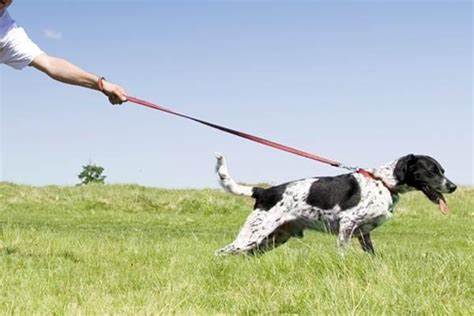How to stop dogs pulling on a lead, according to a vet

There are no quick fixes to stop a dog pulling on their lead because it is normal canine behaviour, however there are some tips and tricks you can try if you have a persistent puller.
“Walks are an exciting time for your dog, which means sometimes they pull on their lead – even if you only wanted a leisurely stroll,” PDSA Vet, Shauna Walsh, tells Country Living.
“When your dog pulls on their lead, it can be uncomfortable for both of you and take all enjoyment out of your walk but the good news is, you can train your dog to walk nicely on the lead!”
While dogs pulling on a lead can be frustrating, remember to always use reward-based training. This will help your dog to understand that pulling is not a good thing. Shauna adds: “Avoid using punishment and adverse training methods such as choke collars, which risk injuring your dog, and can actually make your dog’s behaviour worse, as well as potentially damaging the bond between you.”
Wondering how you can train your dog to walk nicely?
Teaching your dog not to pull takes time and patience, but lots of encouragement through praise will stop them racing towards their destination. Take a look at everything you can do below…
How to stop dogs pulling on a lead
1. “Having a good play session prior to your walk can burn off some of your dog’s energy beforehand, making them less likely to pull, and making your training easier,” says Shauna.
2. Don’t forget to take your dog’s favourite treats with you. “Boiled chicken, turkey breast, or carrots work well, and are low in fat. If you find these low-fat treats aren’t quite exciting enough to stop your dog pulling on their lead, you can try something of higher value, like cheese or sausage, but keep an eye on their weight! Remember to reduce their meals by 10% to allow for treats on training day
3. Next, get out their lead and harness. “If your dog gets over excited just seeing the lead and harness, you may need to de-sensitise them to this over time by repeatedly having it out on show, picking it up and putting it down, or perhaps even putting it on them and taking it off again,” explains Shauna. “Pick a quiet area to start the training — your dog will learn quicker if there are less distractions.”
4. If your dog starts pulling on a lead, show them that walking on a loose lead will result in a reward. “As soon as your dog starts pulling, stop walking. Never pull their lead back, just wait for them to stop pulling.”
5. “Once there is slack in the lead again, reward them with a treat and continue walking. Repeat this during your walks – your time outside with them will likely take a lot longer than usual, but your commitment will pay off.
6. Finally, begin to phase out treats. “Over time, as your dog starts to learn not to pull on the lead, you can try to gradually phase out the treats and replace them with lots of praise instead. Always phase out treats slowly rather than just stopping as they might lose their motivation.”










Leave a comment